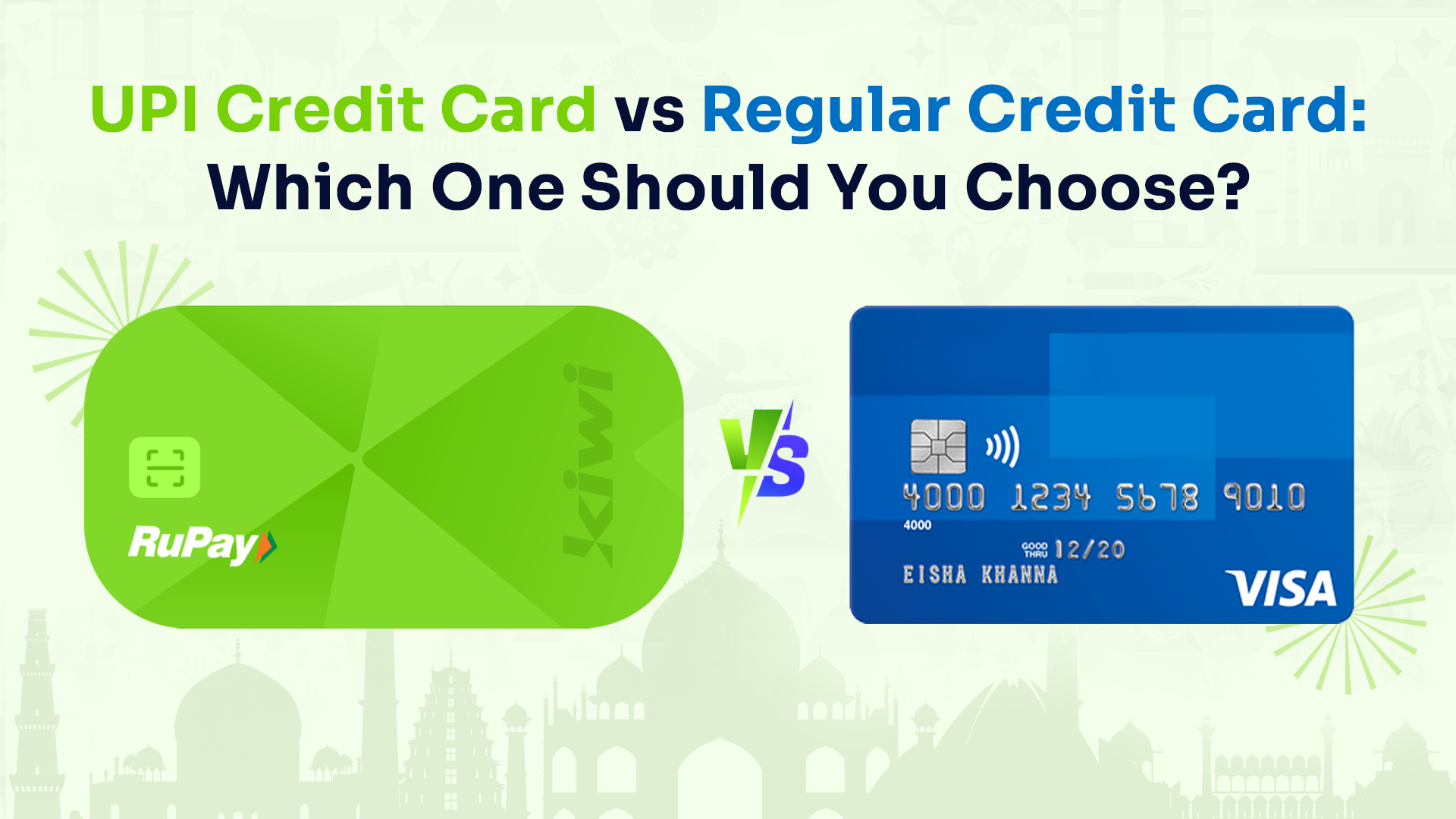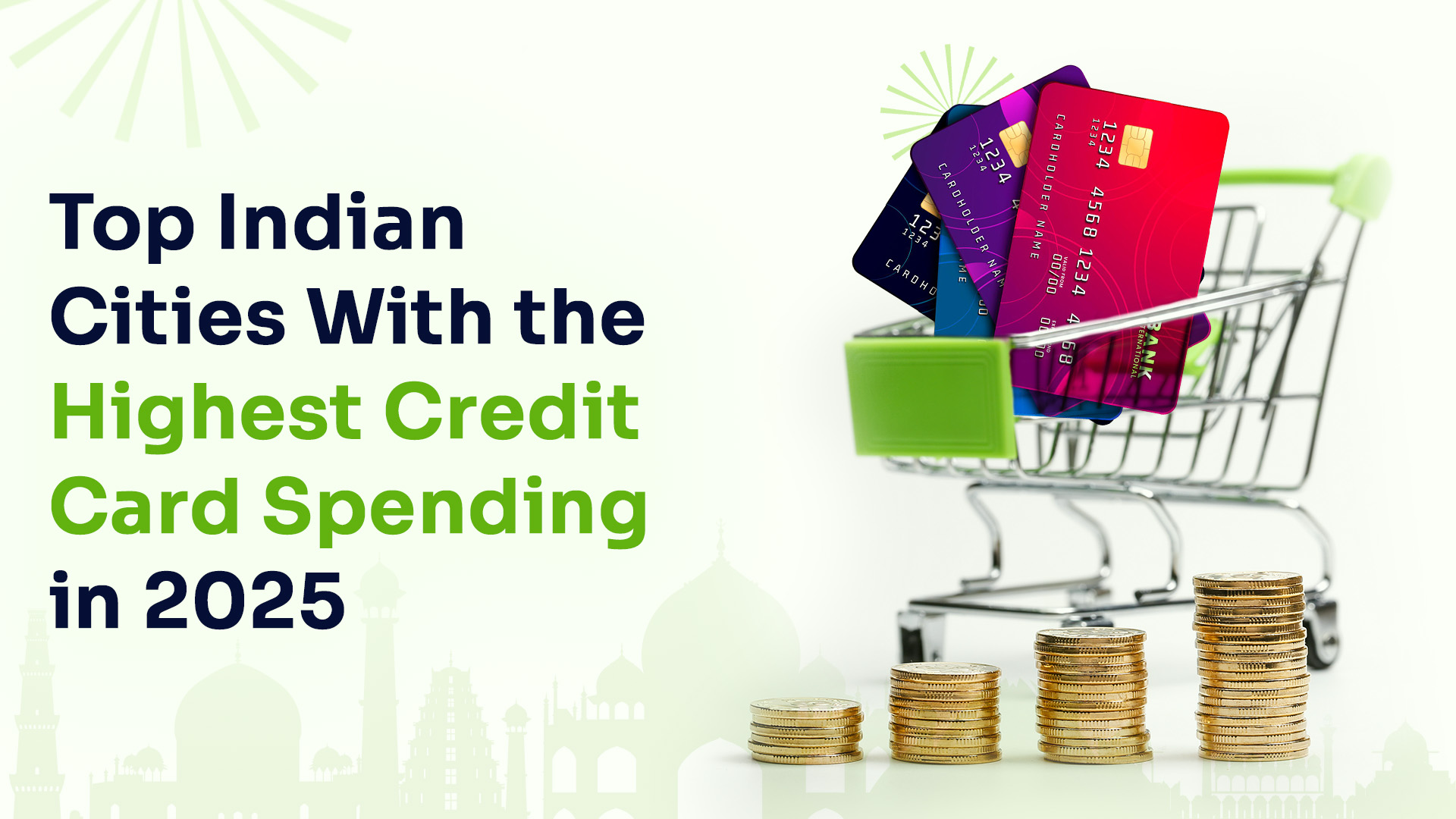
Credit cards and UPI(Unified payment interface) are two of the most common modes of payment in India. Earlier you could only link your savings accounts to UPI and make payments from your savings account. Recently UPI allowed the linking of credit cards with the UPI and enabled credit card payment via UPI. Right now this option is only available for RuPay network cards. Visa, MasterCard, and Amex network card holders can not make UPI payments from credit cards. In this blog we will discuss that onset of these changes in UPI payments which card will be more beneficial for you: UPI Credit Card or Regular Credit Card.
What is a Regular Credit Card?
A regular credit card is issued by banks or financial institutions. It lets you borrow money (up to a limit) to make purchases and repay later with or without interest. In the current scenario we can think of Visa, MasterCard and Amex network cards as regular credit card. It is important to know that some RuPay network cards also don’t have UPI payment functionality.
Key Features :
- Borrow Now, Pay Later: Spend even if you don’t have enough cash.
- Reward Programs: Earn points, cashback, or miles.
- EMI Options: Convert large purchases into installments.
- Wide Acceptance: Use globally at offline and online stores.
- Credit Score Building: Responsible use improves your credit score.
- Global Usability: Regular credit cards work internationally without restrictions.
- High Spending Limits: Suitable for large purchases and emergency needs.
What is a UPI Credit Card?
A UPI Credit Card links the convenience of UPI payments with the benefits of a credit card. You can link your credit card to UPI apps and make payments directly from it. Rupay Cards from selected banks can be used for UPI payments hence referred as UPI Credit card. Kiwi provide an UPI Credit Card which can be used for UPI payments.
Key Features :
- Linked to UPI: Connect your card to UPI apps like PhonePe or Google Pay.
- Instant Transactions: Make quick UPI payments using your credit limit.
- No Card Swiping: Pay via the UPI app without carrying your card.
- Reward Benefits: Earn rewards on UPI transactions.
- Accessible for Small Vendors: Pay even at local shops accepting UPI.
- Faster Local Payments: Particularly useful for payments at kirana stores and local markets.
- Simplified Tracking: View transactions directly on the UPI app.
How Do UPI enabled Credit Cards Work?
After linking your UPI ID to your credit card, UPI apps debit amounts from your credit card limit instead of your bank account. For example, if you spend ₹2,000 on groceries using a UPI Credit Card, the amount gets charged to your credit card. You repay it during your billing cycle. This enables seamless spending without needing to swipe your card. All major UPI apps like PhonePe, Google Pay, Cred have this functionality to connect credit card for UPI payments.
Head-to-Head Comparison of Cards
1. Payment Process
- Regular Credit Card: Requires swiping or entering details for payments.
- UPI Card: Use UPI apps for faster payments.
2. Usage
- Regular Credit Card: Accepted globally at POS machines and online.
- UPI Card: Limited to UPI-enabled merchants (mostly in India) for UPI payments but can be used on POS machines and online as well.
3. Ease of Use
- Regular Credit Card: Carry your physical card or remember its details.
- UPI Card: No need for a physical card; use UPI apps.
4. Reward System
- Regular Credit Card: Rewards vary by spending categories like dining or travel.
- UPI Card: Rewards focus on UPI transactions for daily expenses.
5. Accessibility for Small Vendors
- Regular Credit Card: Small vendors may not accept cards.
- UPI Card: Widely accepted by small vendors through UPI.
6. Fees and Charges
- Regular Credit Card: Includes annual fees, foreign transaction fees, and interest.
- UPI Card: Similar fees but no extra charges for UPI payments.
7. Credit Score Impact
- Regular Credit Card: Builds credit history with responsible use.
- UPI Card: Also helps improve credit scores.
8. Security
- Regular Credit Card: Prone to fraud if details are compromised.
- UPI Card: Safer with UPI’s PIN-based security.
9. Transaction Speed
- Regular Credit Card: Requires swiping or entering OTPs, taking a few seconds.
- UPI Card: Payments happen instantly through the UPI platform.
Pros and Cons of UPI enabled Credit Cards
Pros:
- Seamless UPI payments.
- Accepted by small vendors.
- Rewards for daily transactions.
- Secure PIN-based transactions.
- Eliminates the need for physical cards.
- Ideal for frequent small transactions.
- Simplified transaction history via UPI apps.
Cons:
- Limited to UPI-enabled merchants in India.
- Fewer advanced reward categories.
- Requires UPI app usage.
- Not ideal for global travel or international payments.
- May have limited high-value transaction capabilities compared to regular credit cards.
Who Should Choose a Regular Credit Card?
Choose a regular credit card if:
- You travel internationally or shop on global websites.
- You want advanced rewards like air miles.
- You make high-ticket purchases requiring EMI.
- You need a card with high transaction limits.
- You value exclusive travel and luxury benefits.
Who Should Choose a UPI Credit Card?
- You shop locally or make small payments.
- You’re comfortable using UPI apps.
- You prefer not carrying your card.
- You want rewards on UPI transactions.
- You frequently pay at vendors who rely on QR codes.
Can You Have Both?
Yes! A regular card can be your go-to for travel and online shopping, while a UPI Card suits daily expenses at local vendors. This combination maximizes rewards and provides payment flexibility. Having both cards also allows you to choose the best option for specific transactions. For instance, you might use a regular card for flight bookings and a UPI Card for buying groceries from a local vendor.
Why UPI enabled Credit Cards Are a Game Changer
- Enhanced Financial Inclusion: UPI Credit Cards bring credit facilities to people who may not have had access to traditional credit systems.
- Digital India Push: They promote cashless transactions and align with India’s digital payment goals.
- Convenience: Eliminates the need for POS machines, enabling easy credit-based payments even in remote areas.
- Daily Use Rewards: Offers benefits for frequent and low-value transactions often overlooked by regular cards.
- Wide Adoption Potential: With UPI’s growing popularity, these cards are poised to gain significant traction.
Conclusion: Which One Should You Choose?
Which card you should largely depends on your spending habits and usage of credit card for example –
- Pick a UPI Card for convenience and local transactions.
- Opt for a Regular Credit Card for travel and high-end rewards.
Having both offers the best of both worlds. UPI Credit Cards are a great addition to India’s digital payment ecosystem, making everyday spending easier and more rewarding. Meanwhile, regular credit cards remain unmatched for global usability and high-value benefits. Evaluate your needs and consider owning both to maximise your financial flexibility and rewards.








